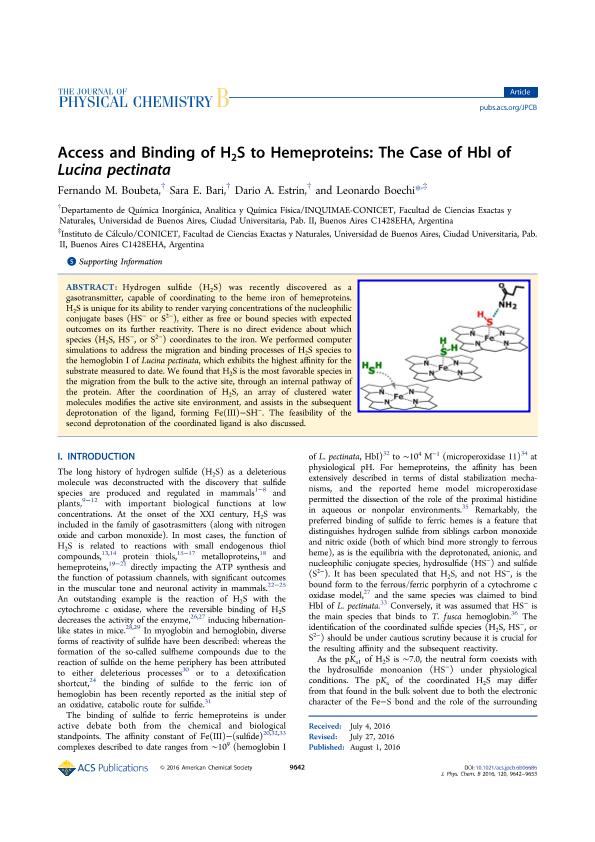Artículo
Access and Binding of H2S to Hemeproteins: The Case of HbI of Lucina pectinata
Fecha de publicación:
09/2016
Editorial:
American Chemical Society
Revista:
Journal of Physical Chemistry B
ISSN:
1520-6106
Idioma:
Inglés
Tipo de recurso:
Artículo publicado
Clasificación temática:
Resumen
Hydrogen sulfide (H2S) was recently discovered as a gasotransmitter, capable of coordinating to the heme iron of hemeproteins. H2S is unique for its ability to render varying concentrations of the nucleophilic conjugate bases (HS- or S2-), either as free or bound species with expected outcomes on its further reactivity. There is no direct evidence about which species (H2S, HS-, or S2-) coordinates to the iron. We performed computer simulations to address the migration and binding processes of H2S species to the hemoglobin I of Lucina pectinata, which exhibits the highest affinity for the substrate measured to date. We found that H2S is the most favorable species in the migration from the bulk to the active site, through an internal pathway of the protein. After the coordination of H2S, an array of clustered water molecules modifies the active site environment, and assists in the subsequent deprotonation of the ligand, forming Fe(III)-SH-. The feasibility of the second deprotonation of the coordinated ligand is also discussed.
Palabras clave:
Hemeprotein
,
Qm-Mm
,
H2s
Archivos asociados
Licencia
Identificadores
Colecciones
Articulos(INQUIMAE)
Articulos de INST.D/QUIM FIS D/L MATERIALES MEDIOAMB Y ENERGIA
Articulos de INST.D/QUIM FIS D/L MATERIALES MEDIOAMB Y ENERGIA
Citación
Boubeta, Fernando Martín; Bari, Sara Elizabeth; Estrin, Dario Ariel; Boechi, Leonardo; Access and Binding of H2S to Hemeproteins: The Case of HbI of Lucina pectinata; American Chemical Society; Journal of Physical Chemistry B; 120; 36; 9-2016; 9642-9653
Compartir
Altmétricas




